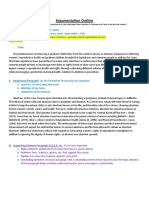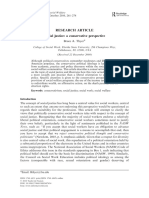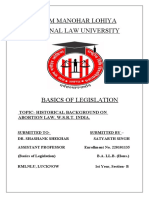0% found this document useful (0 votes)
26 views4 pagesAbortion
The document discusses the history and current state of abortion rights in the United States, highlighting key Supreme Court rulings such as Roe v. Wade and Dobbs v. Jackson Women's Health Organization. It outlines the ongoing debate between pro-choice and pro-life advocates, the impact of state laws on abortion access, and recent legal developments regarding medication abortions. As of June 2024, many states have enacted restrictive abortion laws, while others have implemented protections for abortion rights.
Uploaded by
Juan Alonso-RodriguezCopyright
© © All Rights Reserved
We take content rights seriously. If you suspect this is your content, claim it here.
Available Formats
Download as PDF, TXT or read online on Scribd
0% found this document useful (0 votes)
26 views4 pagesAbortion
The document discusses the history and current state of abortion rights in the United States, highlighting key Supreme Court rulings such as Roe v. Wade and Dobbs v. Jackson Women's Health Organization. It outlines the ongoing debate between pro-choice and pro-life advocates, the impact of state laws on abortion access, and recent legal developments regarding medication abortions. As of June 2024, many states have enacted restrictive abortion laws, while others have implemented protections for abortion rights.
Uploaded by
Juan Alonso-RodriguezCopyright
© © All Rights Reserved
We take content rights seriously. If you suspect this is your content, claim it here.
Available Formats
Download as PDF, TXT or read online on Scribd
/ 4























































































